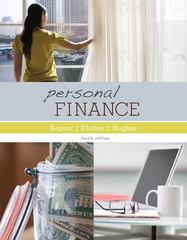
Conglomerates', Inc. operates two divisions, a soap division and a lawn product division. While Conglomerates, Inc. does not, itself, have an Equity Beta for either of the divisions, a number of "pure play" companies exist in each industry, thus permitting Conglomerates, Inc. to establish a proxy Equity Beta for each of their two divisions, using the industry data noted below. However, the degree of leverage for each of the firms in the industry(s) differ from each other as well as their market capitalization as a percentage of the industry, and from Conglomerates' target leverage factor for each division (hint - weight the individual pure play" equity betas of each industry by the individual company's percent of market capitalization to the industry). Company A B D Equity Beta 0.88 1.46 0.38 0.95 SOAP INDUSTRY Debt/Asset % 14.0% 79.0% 69.0% 65.0% Mkt Capitalization 22% 17% 36% 25% Conglomerates wishes to target a debt/asset ratio of 48% for their soap division, representative of an "effective yield to maturity" of a ten-year bond with a par value of $100,000, a projected selling price of $106,417, and a coupon rate of 10%, with annual payments. Company A B D LAWN PRODUCT INDUSTRY Equity Beta Debt/Asset % 0.75 40.0% 0.60 10.0% 0.13 6.0% 0.64 16.0% Mkt Capitalization 28% 19% 28% 25% For the Lawn Product Division, Conglomerates wishes to target a debt/asset ratio of 62%, again of long-term debt, representative of an "approximate yield to maturity", utilizing a a ten-year bond with a par value of $100,000, and a coupon rate of 10%, with annual payments and a selling price of $88,890. Assume a corporate tax rate of 30%, an historical excess market return of 7.50% and a long-term risk-free rate of 8.95%, calculate the weighted after-tax cost of capital for both of the divisions, as well as the corporate weighted after-tax cost of capital, on the basis that the working assets of the Soap Division represent 45% of the total working assets of the company. You may use the traditional model for unlevering beta (Bu) as [Bl= (1 + (1-t) x D/E], assuming a zero debt beta. Conglomerates', Inc. operates two divisions, a soap division and a lawn product division. While Conglomerates, Inc. does not, itself, have an Equity Beta for either of the divisions, a number of "pure play" companies exist in each industry, thus permitting Conglomerates, Inc. to establish a proxy Equity Beta for each of their two divisions, using the industry data noted below. However, the degree of leverage for each of the firms in the industry(s) differ from each other as well as their market capitalization as a percentage of the industry, and from Conglomerates' target leverage factor for each division (hint - weight the individual pure play" equity betas of each industry by the individual company's percent of market capitalization to the industry). Company A B D Equity Beta 0.88 1.46 0.38 0.95 SOAP INDUSTRY Debt/Asset % 14.0% 79.0% 69.0% 65.0% Mkt Capitalization 22% 17% 36% 25% Conglomerates wishes to target a debt/asset ratio of 48% for their soap division, representative of an "effective yield to maturity" of a ten-year bond with a par value of $100,000, a projected selling price of $106,417, and a coupon rate of 10%, with annual payments. Company A B D LAWN PRODUCT INDUSTRY Equity Beta Debt/Asset % 0.75 40.0% 0.60 10.0% 0.13 6.0% 0.64 16.0% Mkt Capitalization 28% 19% 28% 25% For the Lawn Product Division, Conglomerates wishes to target a debt/asset ratio of 62%, again of long-term debt, representative of an "approximate yield to maturity", utilizing a a ten-year bond with a par value of $100,000, and a coupon rate of 10%, with annual payments and a selling price of $88,890. Assume a corporate tax rate of 30%, an historical excess market return of 7.50% and a long-term risk-free rate of 8.95%, calculate the weighted after-tax cost of capital for both of the divisions, as well as the corporate weighted after-tax cost of capital, on the basis that the working assets of the Soap Division represent 45% of the total working assets of the company. You may use the traditional model for unlevering beta (Bu) as [Bl= (1 + (1-t) x D/E], assuming a zero debt beta







